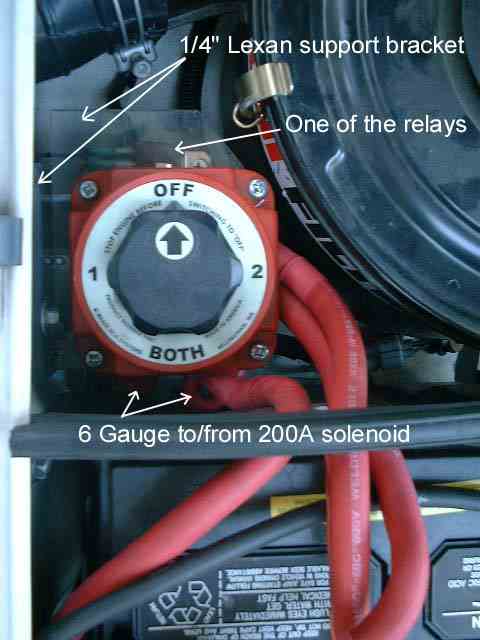muddymopar said:
series i would get more amps and volts would stay the same, but parallel it would get more volts and amps would stay the same....
so which one do i do....
thanks in advance
Reversed. Connecting batteries in series adds voltage, but not current. Connecting batteries in parallel means same voltage, but adds up the current.
If you connect two 12VDC batteries at 200Ah in series, you get 24VDC at 200Ah.
Connect the same two batteries (12VDC @ 200Ah) in parallel, and you get 12VDC @ 400Ah.
Identical batteries are especially important when connecting batteries in series - as you end up with batteries draining each other below a certain threshhold (and you effectively draw batteries x lowest current rating before it gets hairy.) It's a bit less important in parallel - but banks of batteries should still be the same ratings, and the same age (if you have a pair of batteries that work together, get them both at the same time and use them at about the same rate.) If you isolate one battery from the other, but they're still connected in parallel (like with deep cycles on isolators,) you can get some room with age and ratings - but you still want to keep things fairly close. Banks on either side of an isolator should still be identical (two batteries on each side of an isolator should be two sets of twins.)
The main reason to run a secondary battery would be one of the following:
1) You have a massive high-draw accessory that sees at least occasional use. Like a winch (drawing anywhere between 200 and 450A - given vehicle weight and added goodies and much and such - especially if you're dealing with mudding...
2) You have electrical accessories that you want to use with the engine not running - like radios, refreshment gear (blender, fridge, ...) or inverters and power tools.
3) You have lighting you want to use with the vehicle off - work lights or something like that.
Note the largest factor tho - stuff you want to use, powered electrically, with the engine
off. Or, you use an electrical winch a lot.

